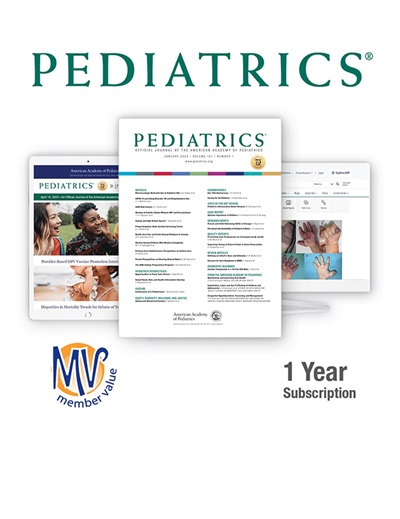Guided Self-Help vs Group Treatment for Children With Obesity: A Randomized Clinical Trial.
IF 6.2
2区 医学
Q1 PEDIATRICS
引用次数: 0
Abstract
BACKGROUND AND OBJECTIVES Family-based behavioral treatment (FBT) for children with obesity is provided in weekly parent and child groups over 6 months. A guided self-help FBT program (gshFBT) is provided to the dyad in short meetings. Both interventions provide the same content; however, gshFBT provides this content in less time (FBT = 23 hours, gshFBT = 5.3 hours). This study aimed to evaluate whether gshFBT is noninferior to FBT on child weight loss and cost-effectiveness. METHODS 150 children aged between 7.0 and 12.9 years with a BMI between the 85th and 99.9th percentile and their parent were recruited and randomized to a 6-month program of gshFBT (n = 75) or FBT (n = 75) and were followed 12 months post-treatment. RESULTS A total of 150 children (mean age = 10.1 years, 49% female, mean BMIz = 2.09) and their parent (mean age = 41.5 years, 87% female, 45% Hispanic, 37% White non-Hispanic, 9.7% Asian, 4.8% Black, 7.3% other) were recruited from the San Diego Metropolitan area. Joint LME models showed that gshFBT was noninferior to FBT on child weight loss (ΔBMIz = -0.02 [90% credible interval [CI] -0.08-0.05, P = .65]; ΔBMIp95% = -1.57 [90% CI -4.46-1.31, P = .28]) and cost less (cost/dyad gshFBT = $1498; FBT = $2775). CONCLUSION The gshFBT program provided similar weight losses for children with less contact hours and with lower cost than FBT. The reduced time and ease of scheduling for the family in gshFBT will allow for an increased reach of treatment to a greater proportion of families in need.求助全文
约1分钟内获得全文
求助全文
来源期刊

Pediatrics
医学-小儿科
CiteScore
12.80
自引率
5.00%
发文量
791
审稿时长
2-3 weeks
期刊介绍:
The Pediatrics® journal is the official flagship journal of the American Academy of Pediatrics (AAP). It is widely cited in the field of pediatric medicine and is recognized as the leading journal in the field.
The journal publishes original research and evidence-based articles, which provide authoritative information to help readers stay up-to-date with the latest developments in pediatric medicine. The content is peer-reviewed and undergoes rigorous evaluation to ensure its quality and reliability.
Pediatrics also serves as a valuable resource for conducting new research studies and supporting education and training activities in the field of pediatrics. It aims to enhance the quality of pediatric outpatient and inpatient care by disseminating valuable knowledge and insights.
As of 2023, Pediatrics has an impressive Journal Impact Factor (IF) Score of 8.0. The IF is a measure of a journal's influence and importance in the scientific community, with higher scores indicating a greater impact. This score reflects the significance and reach of the research published in Pediatrics, further establishing its prominence in the field of pediatric medicine.
 求助内容:
求助内容: 应助结果提醒方式:
应助结果提醒方式:


